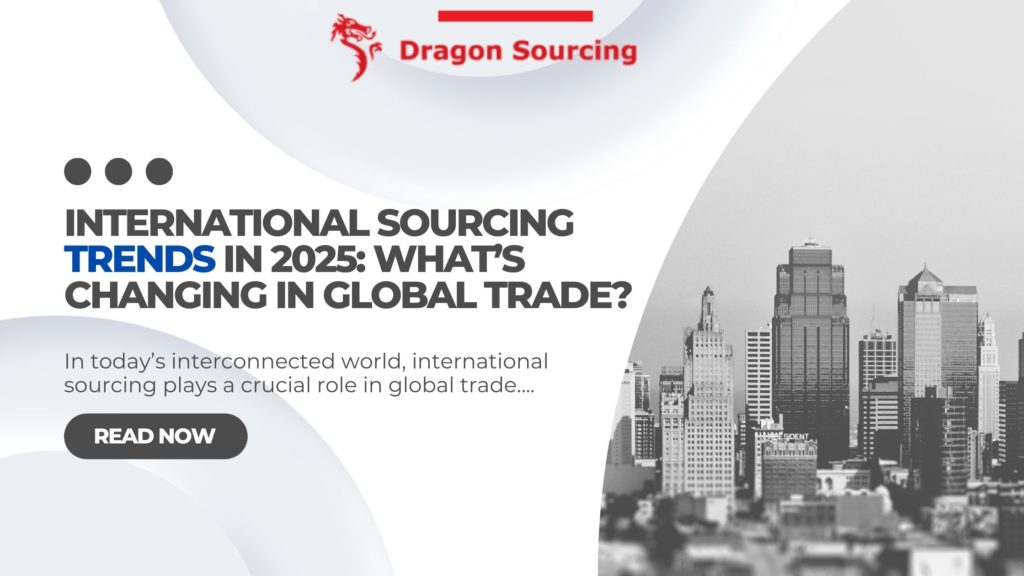
Synopsis: International sourcing is evolving due to geopolitical shifts, technology, and sustainability demands. Nearshoring and friendshoring are reducing supply chain risks, while AI and blockchain enhance procurement efficiency. Businesses are prioritizing sustainable and ethical sourcing to comply with ESG standards. Changing trade policies and tariffs require companies to stay updated on regulations. The rise of B2B digital marketplaces is making supplier diversification essential. To succeed in 2025, businesses must adopt agile sourcing strategies, leverage technology, and ensure compliance to stay competitive in global trade.
Introduction
In today’s interconnected world, international sourcing plays a crucial role in global trade, helping businesses access cost-effective raw materials, high-quality products, and skilled labor. However, as we move into 2025, several emerging trends are reshaping the landscape of global sourcing. Companies must stay informed about these changes to remain competitive and resilient.
In this article, we will explore the most significant international sourcing trends in 2025, focusing on shifting supply chain dynamics, technological advancements, regulatory changes, and sustainability initiatives. This analysis follows the E-E-A-T (Experience, Expertise, Authoritativeness, and Trustworthiness) framework to provide a well-researched, reliable, and expert-backed overview of the evolving global trade landscape.
1. Shift Toward Nearshoring and Friendshoring
The Decline of Traditional Offshoring
For decades, businesses relied on offshoring to countries like China, Vietnam, and India to benefit from lower production costs. However, ongoing geopolitical tensions, rising labor costs, and pandemic-related disruptions have led companies to explore alternatives such as nearshoring and friendshoring.
- Nearshoring involves moving production closer to home markets to reduce lead times and mitigate supply chain disruptions. For example, many U.S. companies are shifting their sourcing from China to Mexico.
- Friendshoring refers to sourcing from politically allied countries to avoid trade restrictions and supply chain vulnerabilities. The U.S. and European nations are increasingly sourcing from countries like India, Taiwan, and Eastern European regions.
Impact on Global Trade
- A growing preference for regional supply chains will impact global trade patterns.
- Countries that offer stable political relations and strong infrastructure will become sourcing hubs.
- Businesses will balance cost savings with supply chain resilience when choosing sourcing locations.
2. The Rise of AI and Automation in Sourcing
How AI is Transforming Procurement
Artificial intelligence (AI) and automation are revolutionizing international sourcing by improving efficiency, reducing costs, and minimizing risks. Key AI applications in sourcing include:
- Predictive analytics: AI tools analyze historical data to forecast demand and supplier performance.
- Supplier risk assessment: AI-driven risk models assess potential disruptions due to political, economic, or environmental factors.
- Automated negotiations: AI-powered platforms assist in negotiating supplier contracts, ensuring optimal pricing and terms.
The Role of Blockchain in Supply Chains
Blockchain technology enhances transparency and trust in global sourcing by:
- Providing real-time tracking of goods from suppliers to buyers.
- Reducing fraud and counterfeiting by offering immutable records of transactions.
- Enhancing contract enforcement through smart contracts.
Companies leveraging AI and blockchain will gain a competitive edge by improving efficiency, accuracy, and security in their international sourcing strategies.
3. Sustainability and Ethical Sourcing
Growing Demand for Eco-Friendly Products
With increasing consumer awareness of environmental and social issues, sustainability is no longer optional in international sourcing. Companies are actively seeking suppliers that align with ESG (Environmental, Social, and Governance) standards.
Key Sustainability Trends
- Carbon footprint reduction: Businesses are prioritizing low-emission supply chains and sourcing from manufacturers that use renewable energy.
- Circular economy initiatives: Companies are sourcing materials that can be reused or recycled, reducing waste and environmental impact.
- Ethical labor practices: Brands are ensuring fair wages and safe working conditions in factories to meet international compliance standards like BSCI, Sedex, and Fair Trade.
Impact on Global Trade
- Companies that fail to adopt sustainable sourcing may face regulatory fines and consumer backlash.
- Eco-friendly certifications will become a key differentiator in supplier selection.
- Governments may introduce stricter import/export regulations related to carbon emissions and labor conditions.
4. Reshaping of Trade Policies and Regulations
Changing Tariffs and Trade Agreements
Trade policies are evolving due to shifting geopolitical alliances, economic uncertainties, and environmental concerns. In 2025, businesses must navigate:
- Post-pandemic tariff changes affecting international trade costs.
- New trade agreements like the Indo-Pacific Economic Framework (IPEF) and updates in EU-China trade relations.
- Customs digitization, making cross-border transactions faster and more efficient.
Compliance Challenges in International Sourcing
Companies must stay updated on:
- New import/export restrictions related to environmental sustainability.
- Data security laws affecting digital transactions in sourcing.
- Product quality standards that vary across regions.
Non-compliance can result in legal penalties, supply chain disruptions, and reputational damage.
5. Digital Marketplaces and Supplier Diversification
Growth of B2B Digital Marketplaces
Traditional supplier networks are being replaced by B2B digital marketplaces like Alibaba, ThomasNet, and Global Sources. These platforms offer:
- Verified supplier listings, reducing the risk of fraud.
- AI-driven matchmaking, connecting buyers with the most suitable suppliers.
- Transparent pricing and real-time tracking, improving procurement efficiency.
Importance of Supplier Diversification
Relying on a single supplier or country for sourcing is risky. In 2025, companies will prioritize:
- Multi-country sourcing strategies to minimize dependency on one region.
- Diversification of supplier base to handle supply chain shocks.
- Flexible contracts to adapt to market fluctuations and disruptions.
Conclusion
The global trade landscape is rapidly evolving, and international sourcing in 2025 will be shaped by trends such as nearshoring, AI-driven procurement, sustainability, regulatory changes, and digital marketplaces. Companies that stay ahead of these trends will enhance supply chain resilience, optimize costs, and meet consumer expectations.
To succeed in international sourcing, businesses must adopt data-driven decision-making, ethical procurement practices, and agile sourcing strategies. By doing so, they can navigate the complexities of global trade while securing a sustainable and competitive future.
Are you ready to adapt your sourcing strategies for 2025? Share your thoughts and experiences in the comments below!



